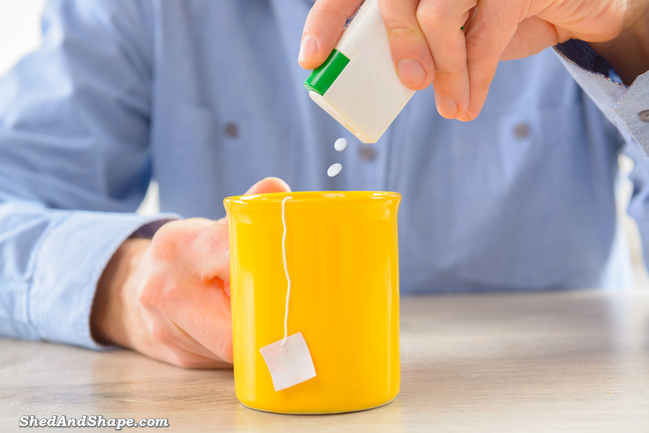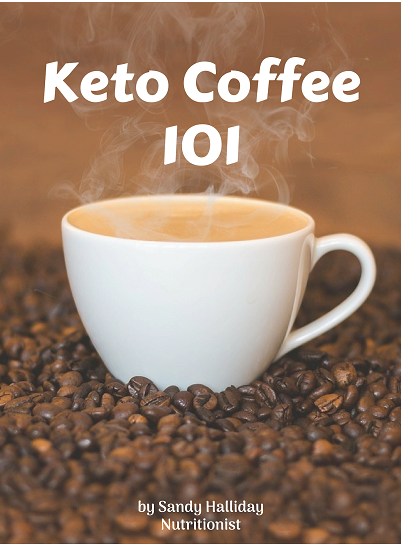If you’re just starting out with following the keto diet you’ve probably heard of keto flu but what is keto flu exactly? This type of flu is a common side effect that most keto dieters go through.
Although it’s only temporary, the experience can bring discomfort and could make it difficult for you to focus on your diet. So, in this article, we’ll talk more about keto flu and what you can do to prevent it.
What is Keto Flu?
So what is keto flu? Keto flu is basically your body’s way of responding to ketosis. It’s like your body is going through a withdrawal phase after giving up carbs. The symptoms of keto flu often mimic the symptoms of flu, which is why it’s called as such.
According to Amy Gorin, owner of the Amy Gorin Nutrition in New York,
“These symptoms occur because your body is getting used to the effects the diet is having on your body.”
When you limit your consumption of carbs and eat lots of fats, your body will go into a process known as ketosis. in this phase, your body will start to burn fats for energy instead of carbs.
It is your body’s withdrawal from carbs that makes you feeling fatigued during this period. Aside from fatigue, the other symptoms that you may experience are headache, irritability, dizziness, nausea, muscle cramps, diarrhea or constipation, and difficulty falling asleep.
Related reading: Keto Diet Constipation & How To Combat It
I think you will agree that you want to prevent these wretched symptoms so let’s now have a look at how to prevent them.
How to Prevent Keto Flu?
Now that you know what keto flu is, it’s time to discover some tips on how to prevent or minimize the symptoms. Remember these symptoms will usually disappear by themselves after a few days once your body has adapted to your new diet. However, there are ways to prevent or, at least, minimize your suffering, making it easier for you to focus on your diet.
1. Start Slowly
When making drastic changes to your diet, it’s a good idea to start slowly. You can probably start with a low-carb diet, which is not as restrictive in carbohydrates as keto. Allow your body to adapt to the low-carb diet first before you fully transition to the keto diet.
If you want to get started on a keto diet my 7 Day Keto Diet Jumpstart Program can help.
With a low carb diet, you can eat as much as 60 grams of carbs per day. But with keto, you must limit your intake to less than 50 grams of carbs per day and 20 grams is the amount that many people aim for to start with.
Eating slightly more carbs might slow down your weight loss initially, but this can also lead to better health and help your body prepare for ketosis. But the best part is that you can minimize your risk of developing symptoms of keto flu.
2. Increase your Intake of Salt and Water
Some of the main culprits behind the keto flu symptoms are the lack of salt and water. When you start a very low carb diet you initially lose a lot of water and with it goes sodium.
By increasing your intake of salt and water, you can drastically reduce your symptoms of keto flu, and perhaps, eliminate them.
Related reading: Boost Your Fat Loss Efforts By Drinking Water
In the first few weeks of your keto diet, if you start to develop symptoms like nausea, headache, lethargy, dizziness, and others you can try drinking a glass of filtered water with Himalayan salt.
Simply mix a half-teaspoon of Himalayan or Real salt into a glass of pure water and stir well. After 15 to 30 minutes of drinking this concoction, you should notice the symptoms subside.
Avoid sea salt because most of it is now contaminated with plastic micro-fibers. Salt taken from ancient sea beds like Himalayan salt will not contain plastic.
3. Eat More Fats
One of the most important things to remember when following a keto diet is that you need to feed your body with lots of healthy fats in exchange for carbs. When you are in the state of ketosis, your body will start using fats for energy. Therefore, you need to ramp up your consumption of fats so your body will have something to convert for energy.
Related reading: Benefits of Fat for the Keto Diet
If you don’t eat enough fats, your body will react negatively, and that’s when you start to experience the keto flu symptoms.
Eat lots of healthy fats, such as avocado, grass-fed butter, coconut oil and olive oil. You can eat some free range nitrate-free bacon too, but only in moderation.
Related reading: Best Fats To Eat On A Low Carb Diet
By simply adding butter to your food or loading up on egg yolks, you are already giving your body the fats that it needs to be able to function properly.
Related reading: Health Benefits of Avocado on Keto
4. Consider Taking an Electrolyte Supplement
Drinking lots of filtered or good quality glass bottled water while on the keto diet is very important. But aside from water, make sure to add plenty of electrolyte minerals such as sodium, potassium, magnesium and calcium to your diet as well.
Having a good balance of electrolytes can help to considerably minimize nausea and cramps.
Lowering your intake of carbohydrates causes insulin levels to become lower as well. This, in turn, causes the kidneys to excrete more sodium which disrupts the balance of other electrolytes.
Related reading: Vitamin and Mineral Deficiencies in a Keto Diet
The keto diet restricts some foods that are rich in electrolytes, such as vegetables and fruits. To ensure that you are getting enough electrolytes you can drink zero carb sports drinks, or take a keto electrolyte supplement.
5. Perform Light Exercises
Exercise is very important, whether you’re on the keto diet or not. However, you should limit yourself to light exercises during the early stages of your keto diet.
Since your body is still trying to adapt to your new diet, you might not have the energy to perform high-intensity exercises. Remember, your body is already under stress in trying to adapt to a new diet, so don’t add more burden to it by performing strenuous workout exercises.
Try joining a restorative yoga class. Yoga can help to loosen up your muscles and release endorphins that can help improve your mood. Walking and stretching are also great.
6. Get Good Sleep
Just like with having regular flu, you need to get enough rest to deal with the symptoms of keto flu. Get plenty of sleep and avoid any kind of stress.
If you’re having difficulty falling asleep, try soaking in a warm Epsom salt bath before bed. You could add a few drops of lavender essential oil to it if you have some handy.
Sip a mugful of keto-friendly herbal tea to calm your nerves when you are feeling stressed. Drinking chamomile tea before bed is a good option if you’re having a hard time sleeping.
Final Thoughts
Hopefully, this article has addressed your question of what is keto flu. Keto flu symptoms might be very unappealing, but keep in mind that if you can’t prevent them they will eventually subside. You just need to give it time.
Once you have gotten over these symptoms, you will be able to enjoy all the benefits of the keto diet, including increased energy, mental clarity, and weight loss.










